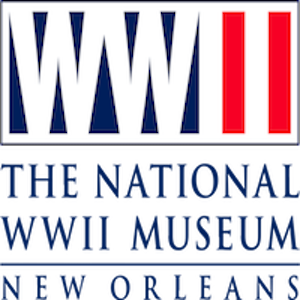National World War II Museum
World War II was a global conflict on an unprecedented scale between 1939 and 1945. The war began when Germany invaded Poland on September 1, 1939, and precipitated a series of declarations of war. Germany rapidly took control of most of the European continent and only in 1942 did they begin to lose ground after failed campaigns in the Soviet Union, the Allies invaded Northern Africa, and the United States began island hopping in the Pacific to retake territory from Japan. Over the next three years, the Allies gained ground in both the European and Pacific theaters until the eventual end of the European war on May 8, 1945, and the Pacific war on September 2, 1945. As a global conflict, WWII touches on a wide variety of global history themes and topics. It touches on war, conflict, racism, nationalism, fascism, competing political systems, technology, imperialism, diplomacy, and globalization, among others. And it includes topics such as the interwar period, the Holocaust, the United Nations, the Cold War, and the atomic bomb, among others.
The National WWII Museum in New Orleans offers a variety of educational resources including distance learning for both teachers (https://www.nationalww2museum.org/programs/online-teacher-professional-development) and K-12 students. Educators can register to attend free training workshops and enroll in free professional development courses. The site also offers recordings and recaps of previous webinars and a calendar (https://www.nationalww2museum.org/events/events-calendar) for upcoming online events. Another opportunity for distance learning are the museum’s three podcasts (https://www.nationalww2museum.org/podcasts), Service on Celluloid, “To the Best of My Ability,” and World War II On Topic, which might be helpful to educators who wish to learn more about the war and its broader impact.
Available remotely for students are paid virtual field trips with a museum educator and free electronic field trips (https://www.nationalww2museum.org/students-teachers/distance-learning/k-12-distance-learning/electronic-field-trips) with a student ambassador designed for grades 5-12. These videos cover topics such as the American home front, Pearl Harbor, Japanese American experiences in internment camps, the Manhattan Project, D-Day, and African American experiences with WWII. The student ambassador host is intended to make the material more accessible to a student audience. These videos are accompanied by viewing guides with suggested supplemental activities. The museum also offers a traveling exhibit program for grades 5-12 called Operation Footlocker (https://www.nationalww2museum.org/students-teachers/educator-resources/classroom-resources/operation-footlocker). Teachers can rent a footlocker filled with real WWI artifacts, a teacher’s manual, and suggestions for teaching students to read artifacts.
In addition to those listed above, the museum offers many other classroom resources. One of these is intended to guide students through the commemoration of Pearl Harbor (https://www.nationalww2museum.org/war/articles/pearl-harbor-education-resources), featuring recorded webinars with the USS Arizona Memorial, lesson plans on President Roosevelt’s speech writing process, lesson plans and research activities on the museum’s collection of high school yearbooks (http://www.ww2yearbooks.org/home/?_ga=2.69898896.1671069470.1695654652-608832484.1695654652), and activities like Design A WWII Memorial to get students thinking about the commemoration process. While these activities are less related to WWII, they may still be useful for educators who wish to use WWII as a lens to teach other skills, like speech writing, art and design, or research.
Another resource is the museum’s large bank of lesson plans available here (https://www.nationalww2museum.org/students-teachers/educator-resources/classroom-resources/traveling-and-special-exhibit-curriculum) and here (https://www.ww2classroom.org/?_ga=2.30955839.1671069470.1695654652-608832484.1695654652). The lesson plans require free registration to access. In addition, the museum offers several STEM resources including Get in the Scrap! (https://www.nationalww2museum.org/get-in-the-scrap) which uses WWII student scrapping practice to promote recycling and energy conservation. The other STEM resources (https://www.nationalww2museum.org/students-teachers/educator-resources/stem-resources) are primarily professional development opportunities for educators as well as a Robotics Challenge for students.
The museum also offers a bank of student resources, primarily research tools such as the yearbook database and Research Starters (https://www.nationalww2museum.org/students-teachers/student-resources/research-starters), a bank of statistics and introductory material on a variety of WWII-related topics such as rationing, women, isolationism, military death, and individual battles. Explore WWII History (https://www.nationalww2museum.org/students-teachers/student-resources/explore-wwii-history) is the same type of resource, intended to give students a brief introduction to a wide variety of topics. Finally, the museum also offers a searchable database of their collections (https://www.ww2online.org/?_ga=2.97694239.1671069470.1695654652-608832484.1695654652) which may be useful for educators wishing to have their students engage in primary source research. Overall, these resources would be useful for educators who want their students to get background information or have access to primary and secondary sources.
